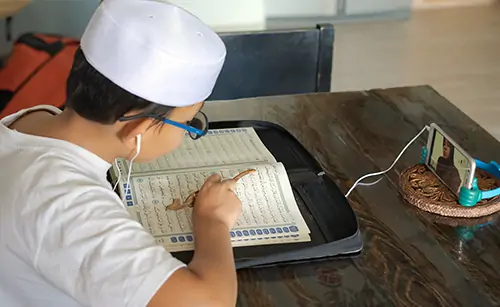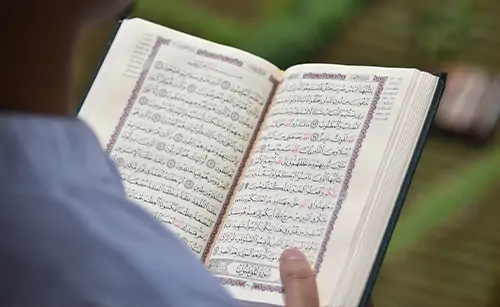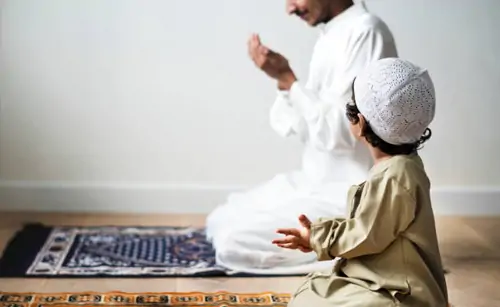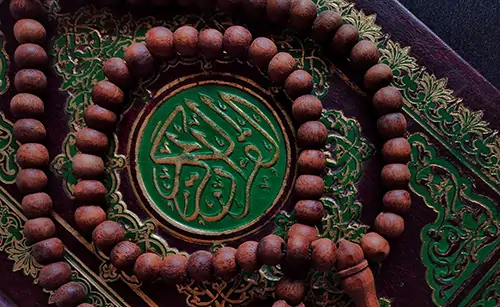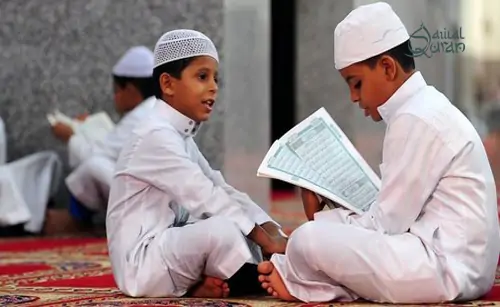How to Pray Salah? – A Complete Step-by-Step Guide for Beginners

Salah, also known as Namaz, is the fundamental act of worship in Islam and one of the five pillars. It is not just a ritual but a spiritual connection between a Muslim and Allah. For new learners, understanding the namaz steps can feel overwhelming, but with proper guidance, anyone can learn it. A well-structured namaz course or online lesson can help in learning Salah at one’s own pace, especially for beginners and children.
In this guide, readers will discover how to do namaz from preparation to completion, including what to recite in each position. Whether one wants to learn Muslim prayer online or teach children through a namaz lesson for kids, this article covers the essentials in a step-by-step guide on how to pray salah.
Why Salah is Important
Salah is the believer’s daily reminder of their purpose in life. It is mentioned repeatedly in the Qur'an as a duty, a mercy, and a source of peace. The Prophet Muhammad ﷺ said that Salah is the “pillar of religion.” It cleanses the soul, strengthens faith, and protects against wrongdoing.
For those beginning their namaz learning, understanding the importance of prayer builds motivation. Regular practice helps one grow spiritually, much like a conversation with Allah that happens five times a day.
Types of Salah
In Islam, there are several types of Salah, each with its own importance and reward. Understanding these helps beginners and children see the bigger picture of prayer beyond just the Namaz Steps.
What is Fard (Obligatory Salah)?
This is the compulsory prayer that every adult Muslim must perform. There are five daily Fard prayers:
- Fajr – 2 rak‘ahs (before sunrise)
- Dhuhr – 4 rak‘ahs (midday)
- Asr – 4 rak‘ahs (afternoon)
- Maghrib – 3 rak‘ahs (after sunset)
- Isha – 4 rak‘ahs (night)
Missing a Fard prayer without a valid reason is a major sin in Islam.
What is Sunnah Salah?
These are prayers the Prophet Muhammad ﷺ regularly performed along with the Fard prayers. They are not obligatory but carry great reward.
Sunnah Mu’akkadah – Strongly recommended, performed regularly (e.g., 2 rak‘ahs before Fajr, 2 or 4 before Dhuhr, 2 after Dhuhr).
Sunnah Ghair Mu’akkadah – Recommended but less emphasized (e.g., extra rak‘ahs after Isha).
What is Nafl (Voluntary Salah)?
Extra prayers a Muslim can perform at any time (except prohibited times) to seek closeness to Allah. Examples include:
Tahajjud – Offered at night after sleeping.
What is Witr Salah?
An odd-numbered prayer performed after Isha, usually three rak‘ahs. It is highly recommended (Sunnah Mu’akkadah). Many scholars advise never missing it.
What is Namaz-e-Janazah (Funeral Prayer)?
A collective prayer offered for a deceased Muslim before burial. It has no bowing (Ruku) or prostration (Sujood) — instead, it consists of standing and making specific supplications for the deceased.
Each type follows the same namaz steps, but the number of units (rak‘ahs) varies. Knowing the types helps in building a complete prayer routine.

Preparation Before Beginning Salah
Before starting Salah, a Muslim must be in a state of physical cleanliness and mental readiness. Here are the essential steps explained in detail:
Wudu (Ablution)
Wudu is a special washing process that purifies certain parts of the body before prayer. It involves washing the hands, mouth, nose, face, arms, wiping the head, and washing the feet in a specific order. This is not just physical cleaning — it’s also a spiritual preparation, washing away minor sins and helping the worshipper feel fresh for Salah.
Clean Clothing
A Muslim should wear modest and clean clothes before praying. For men, this generally means covering from the navel to the knees at minimum; for women, covering the entire body except the face and hands. The clothes must be free from any visible dirt or impurity (najis), such as blood or anything unclean in Islam.
Prayer Space
The place where Salah is offered must be clean and free from distractions. Many Muslims use a prayer mat to ensure cleanliness. It can be performed at home, in the mosque, or any clean place, as long as it’s quiet enough to maintain focus.
Correct Intention (Niyyah)
Niyyah is the mental decision of which prayer you are about to perform (e.g., Fajr, Dhuhr). It is not spoken aloud; rather, it’s a conscious focus in the heart. This step ensures the worshipper knows why they are praying and helps keep their mind centered during Salah.
Beginners often ask, "what is namaz?" — it is more than standing and bowing; it starts with a pure heart and the right intention.
How to Pray Salah (Step by Step)
Here’s a simple guide for namaz learning for beginners:
- Niyyah (Intention) – Silently intend the specific prayer in your heart.
- Takbir in Namaz – Raise both hands to the ears and say “Allahu Akbar.”
- Qiyam (Standing) – Recite Surah Al-Fatiha followed by another short Surah or verses.
- Ruku (Bowing) – Bend at the waist, keep the back straight, and say Subhana Rabbiyal Adheem three times. This answers the question, "what to recite in ruku?".
- Qaumah (Standing after bowing) – Return to standing position.
- Sujood (Prostration) – Place forehead, nose, palms, knees, and toes on the ground and say Subhana Rabbiyal A’la three times."What to recite in Sujood?".
- Jalsa (Sitting) – Sit between two prostrations.
- Second Sujood – Repeat the prostration.
- Tashahhud (Sitting and reciting testimony) – In the final sitting, recite the Tashahhud.
- Salam in Namaz – Turn the head to the right and say “Assalamu Alaikum wa Rahmatullah,” then repeat to the left.
Important point: if you want all Namaz steps in picture format then visit this blog Namaz Guide.
For young learners or new Muslims, joining an Online Namaz or learn salat online program can help in practicing these steps correctly.

Dua After Salah
Once Salah is completed, Muslims are encouraged to recite prayer dua step by step, such as:
- Asking for forgiveness
- Seeking guidance
- Thanking Allah for His blessings
A common supplication after Salah is:
"Allahumma anta as-salam wa minka as-salam tabarakta ya dhal-jalali wal-ikram" – “O Allah, You are Peace, and from You comes peace. Blessed are You, O Possessor of majesty and honor.”
These moments after prayer are ideal for making personal duas for oneself, family, and the community.
Hadith on Salah
The sayings of Prophet Muhammad ﷺ, known as Hadith, provide valuable guidance about the importance of Salah in a Muslim’s life. Here are two powerful examples:
1-The Prophet Muhammad ﷺ said:
"The first matter that the slave will be brought to account for on the Day of Judgment is the prayer. If it is sound, then the rest of his deeds will be sound, and if it is bad, then the rest of his deeds will be bad."
(Reported in Sunan al-Tirmidhi)
This shows the weight Salah carries in a Muslim’s life, making namaz learning a priority for every believer.
2-The Prophet Muhammad ﷺ said:
"Teach your children to pray when they are seven years old, and discipline them for it when they are ten, and separate them in their beds."
(Sunan Abu Dawood)
This hadith gently encourages parents to start namaz learning for kids early, turning it into a habit that will grow with them for life.
Verses From Quran
The Qur'an repeatedly emphasizes the importance of Salah, reminding Muslims that it is not only an act of worship but also a way to protect one’s soul and character. Here are two key verses:
1-Allah says in the Qur'an:
"Indeed, prayer prohibits immorality and wrongdoing, and the remembrance of Allah is greater. And Allah knows that which you do."
(Surah Al-Ankabut 29:45)
This verse reinforces that Salah is not just a ritual, but a guard against sin.
2- Allah says:
"And establish prayer and give zakah and bow with those who bow [in worship and obedience]."
(Surah Al-Baqarah 2:43)
This verse emphasizes that Salah is a direct command from Allah and should be observed regularly as part of a Muslim’s faith and obedience.
Conclusion
Learning how to read namaz is a journey that blends physical actions, heartfelt intention, and spiritual focus. Whether through a namaz course, learn namaz online class, or guidance from family, every Muslim can master the namaz steps with dedication. Teaching children through namaz lessons for kids ensures that the beauty of Salah continues in future generations.
By understanding what is namaz, how to perform it, and what to recite in each position, believers strengthen their relationship with Allah and fulfill one of the most important acts of worship in Islam.
FAQs on How to Pray Salah
What is Namaz in Islam?
Namaz, or Salah, is the obligatory Muslim prayer performed five times daily to worship Allah and seek His guidance.
How many rak‘ahs are in each prayer?
Fajr has 2, Dhuhr and Asr have 4, Maghrib has 3, and Isha has 4 rak‘ahs in the obligatory prayer.
What is Takbir in Namaz?
It is saying “Allahu Akbar” at the start of the prayer while raising both hands to the ears.
What should be recited in Ruku and Sujood?
In Ruku: Subhana Rabbiyal Adheem;
In Sujood: Subhana Rabbiyal A’la.
Can I learn Namaz online?
Yes, many learn salat online and online namaz programs help beginners follow correct namaz steps.
Is Dua after Salah necessary?
While not obligatory, making dua after Salah is highly recommended for blessings and forgiveness.
What is Fard (Obligatory Salah)?
This is the compulsory prayer that every adult Muslim must perform.
How can children learn Salah?
Through namaz lessons for kids, practical demonstration, and consistent encouragement at home.







